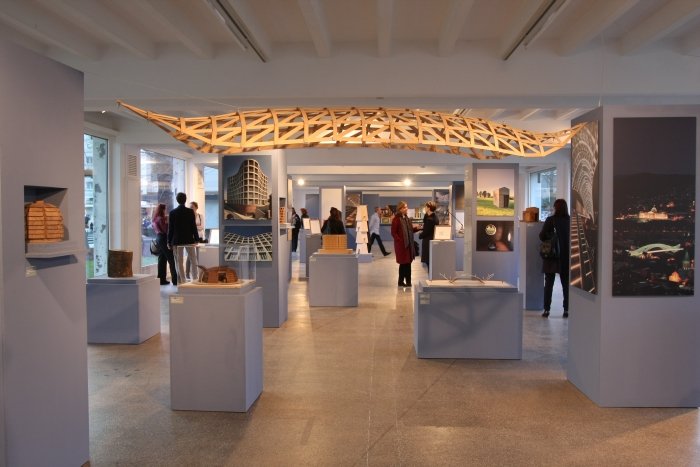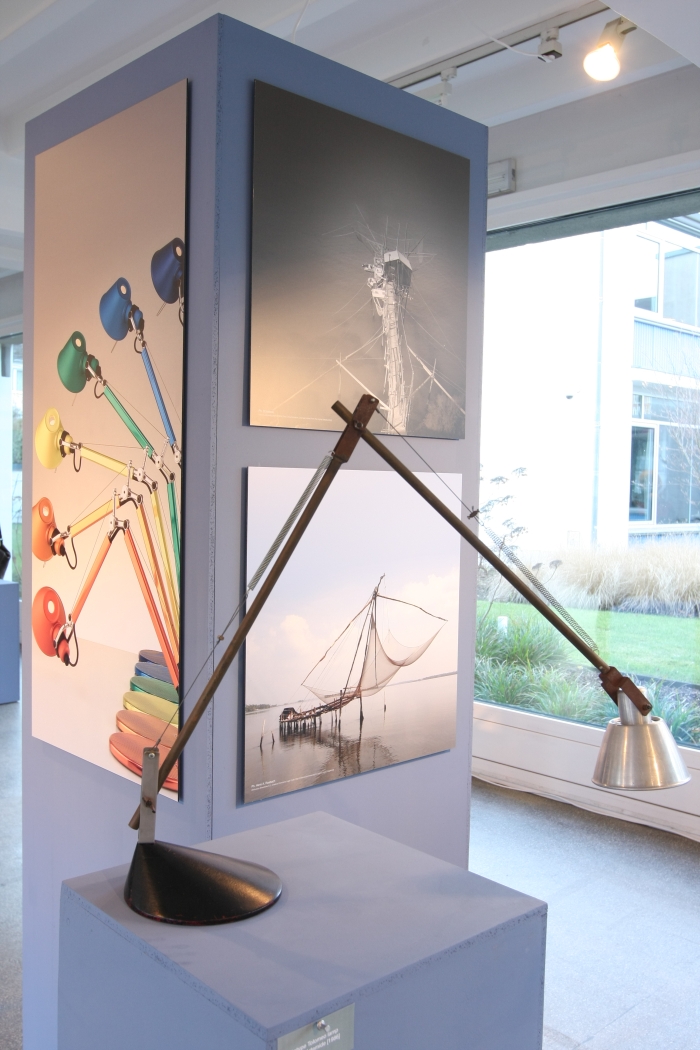Much as we tend to shy away from "Designer of the Year" awards, the presentation of German architecture and design magazine A&W's Designer of the Year award is always an early highpoint of the Passagen Cologne Design Week.
Principally because it invariably results in a compact yet informative exhibition from and about the selected designer. An exhibition that is perhaps never independent nor critical, but which always provides an accessible overview of the designers oeuvre.
Following on from Patricia Urquiola in 2012, Ronan & Erwan Bouroullec in 2013 and Werner Aisslinger in 2014, the 2015 recipient is Michele De Lucchi

Born in Ferrara, Italy, in 1951 Michele De Lucchi studied architecture in Ferrara and Florence before establishing his first architecture practice in Florence in 1976. In 1977 De Lucchi moved to Milan where he quickly became one of the leading protagonists of the experimental design and architecture scene that developed in city during the 1980s and which, in many ways, still defines Milan's reputation as one of Europe's most important centres of architecture and design.
From the early days of his career Michele De Lucchi has worked parallel as architect and designer and has never defined himself as one or the other. And in this sense, according to Michel De Lucchi, the exhibition in Cologne has been conceived "to show that design and architecture are not that far removed from one another, the inspiration for both comes from the same sources."
To this end the exhibition in Cologne features a mix of recent architecture projects such as the Bridge of Peace in Tbilisi, Georgia, the St James Chapel in Auerberg, Bavaria, the Il Tronco office building in Pforzheim, Germany or the so-called Pavilion Zero currently under construction in Milan for the forthcoming Expo 2015, and design projects including the Bisonte stool for De Lucchi's own Produzione Privata brand and the Tolomeo Tavolo lamp for Artemide.
Each featured project is accompanied by a short text from De Lucchi in which he explains the background thinking to and conceptual basis of the project; thus not only allowing visitors to understand this common genesis but also providing a glimpse into the creative thinking of this most influential architect, designer and theorist.
Not that from the exhibition one would be able to automatically gauge just how influential De Lucchi is and was; it is in that respect a very modest and discreet exhibition that focuses on the projects and their origins and makes, for example, little or no reference to Olivetti or the Memphis Group, arguably the two locations where De Lucchi established the reputation he had developed in younger years.
Michele De Lucchi began working with Olivetti in 1979, at the time one of the leading and most innovative European company's in terms of applying design in context of corporate identity and product development.
In 1980 Michele De Lucchi was a co-founder of the Post-modernist architecture and design collective Memphis Group which set out to de-construct ideas of the relationship between form and function and to challenge the conventional understanding of aesthetics.
Or put another way, to de-construct ideas of the relationship between form and function and to challenge the conventional understanding of aesthetics, as applied by companies such as Olivetti.
A contradiction?
"No", answers Michele De Lucchi confidently, "I felt very lucky because through working for Olivetti I had the freedom to develop Memphis and the experience allowed me to understand that design is not only about working professionally with industry but also that it is important that design has a relationship with art and with cultural development."
But does he feel that people remember, understand, this artistic and cultural element of Memphis, or do they just see the bright coloured, largely asymmetric, objects?
"I believe Memphis is perceived more today as a style", he replies, "but at that time we didn't want to create a style but rather break down doors and free our imaginations to find new possibilities"
For yourselves that means Memphis was more a philosophy than a style?
"Design always has to have a very strong philosophical base"

Despite everything Michele De Lucchi has achieved, for us one of the key moments in his career came during the Milan Triennale 1973 where dressed as a Napoleonic soldier and carrying a sign stating "Generic Designer" and a rubbish bag labelled "Project" De Lucchi protested against the endless flow of new products being released onto the market and for all to remind designers of their ethical and social responsibility.
Would he do that again today, we ask, or have the conditions changed in the intervening four decades?
At the mention of the event a warm smile parts the broad, deep beard that has in many ways become Michele De Lucchi's trademark, settantatre he chuckles.
"I think it is still very important to remember that as an architect or as a designer you don't just design the shape of the object or the layout of a building, you design the behaviour of the people who use the space or use the object. And so design and architecture are very deeply involved with society and are not just about the business"
And with an attitude like that Michele De Lucchi is the sort of designer who deserves an award every day of the week.
The A&W Designer of the Year 2015 exhibition by and about Michele De Lucchi can be viewed at the Kölnischer Kunstverein, Hahnenstraße 6, 50667 Cologne until Sunday January 25th.
A few impressions.